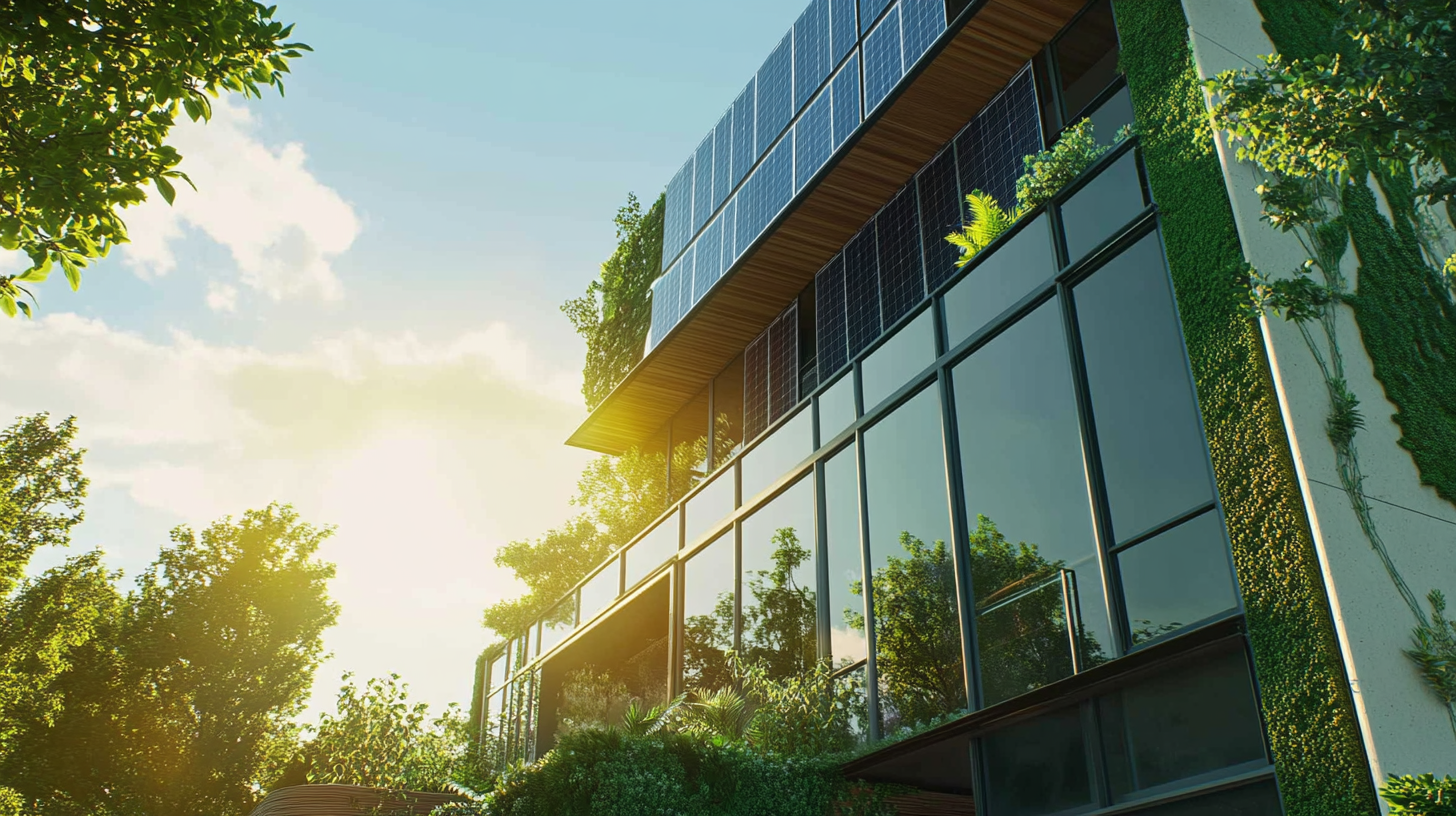Natural beauty for your favorite space
Exploring the Future of Sustainable Building Products for Global Procurement Success
In the face of a rapidly changing global environment, the construction industry is undergoing a significant transformation towards sustainability. As outlined in the "Global Sustainable Building Products Market Report," the market for sustainable building products is expected to reach $689 billion by 2027, growing at a CAGR of 11.3% from 2020. This shift reflects the increasing demand for eco-friendly materials that not only minimize environmental impact but also enhance the efficiency and durability of buildings. Building professionals and procurement specialists are progressively recognizing that adopting "Sustainable Building Products" is not merely a trend but a necessity for long-term success in an increasingly competitive market.
Additionally, research from the “World Green Building Council” indicates that sustainable buildings can save up to 30% in energy costs compared to traditional structures, highlighting both environmental and economic benefits. With government regulations tightening and consumer preferences shifting towards greener solutions, the adoption of sustainable building practices is becoming imperative. By exploring innovative materials and techniques, stakeholders can significantly contribute to a more sustainable future, ensuring that construction practices align with global sustainability goals while meeting the demands of the modern procurement landscape.

Innovative Materials Revolutionizing Sustainable Building Practices
The shift towards sustainable building practices is gaining momentum as the world increasingly prioritizes environmental responsibility. Innovative materials are at the forefront of this revolution, redefining how structures are designed and constructed. From bamboo and recycled steel to bioplastics and rammed earth, these materials not only reduce the ecological footprint of buildings but also enhance their durability and performance. One standout in this realm is cross-laminated timber (CLT), a renewable material that serves as a robust alternative to traditional concrete and steel. CLT’s lightweight nature and strength allow architects to create taller wooden structures, showcasing the beauty of timber while minimizing carbon emissions. Furthermore, advances in bio-based insulation products, like cellulose made from recycled paper, provide efficient thermal regulation while promoting a circular economy. Another emerging trend is the use of innovative prefab construction techniques that leverage sustainable materials. Modular building systems that incorporate salvaged materials or low-impact resources have the potential to streamline the construction process, reduce waste, and lower overall costs. This shift is not just about the materials themselves but also the methodologies employed, which emphasize efficiency and sustainability from the ground up. As the construction industry embraces these cutting-edge materials and techniques, the future of sustainable building looks not only promising but also essential for achieving global procurement success. By investing in innovation and prioritizing sustainability, builders and developers can contribute to a healthier planet while meeting the growing demands of environmentally-conscious consumers.

Global Trends in Sustainable Procurement for Construction
In recent years, the construction industry has witnessed a paradigm shift towards sustainable procurement practices. As global awareness around climate change and resource scarcity escalates, industry stakeholders are increasingly prioritizing sustainable building products. This movement not only fosters environmental stewardship but also aligns with corporate social responsibility goals, making sustainable procurement a vital component in modern construction strategies.
One significant trend in sustainable procurement is the emphasis on circular economy principles. Construction companies are now sourcing materials that can be reused, repurposed, or recycled, significantly reducing waste and minimizing their ecological footprint. This shift not only benefits the environment but also generates cost savings in the long run. Innovative products such as reclaimed wood, recycled metals, and sustainably sourced aggregates are becoming staples in procurement lists, showcasing how eco-friendly choices can be both functional and financially sound.
Moreover, the rise of green certifications and standards, such as LEED and BREEAM, is influencing procurement decisions. Clients and project owners are increasingly demanding compliance with these frameworks, which encourage the use of sustainable materials and practices. As a result, suppliers are adapting by offering products that meet these rigorous sustainability criteria, further driving innovation and competition in the market.
Lastly, technology is playing a pivotal role in advancing sustainable procurement in construction. Digital platforms and supply chain management tools are streamlining the sourcing process, helping companies identify and engage with sustainable product suppliers more efficiently. By leveraging technology, the industry can improve transparency, traceability, and performance, ultimately leading to more informed decisions that prioritize sustainability.

The Role of Technology in Enhancing Sustainable Building Products
The construction industry is at a pivotal moment, balancing rising housing demands with the urgent need for sustainable practices. At the heart of this transformation lies technology, which is redefining how building products are designed, procured, and implemented. Digitalization is revolutionizing construction by enabling more integrated and flexible building designs, resulting in enhanced energy efficiency and reduced environmental impact.
One of the key technological advancements driving this shift is Building Information Modeling (BIM). By providing sophisticated tools for visualization and lifecycle assessment, BIM allows for a thorough analysis of a building's energy performance and resource utilization. This capability not only highlights areas where waste can be minimized but also promotes the use of green materials, ensuring that sustainable practices are woven into the very fabric of construction projects.
Furthermore, innovative software solutions are emerging that analyze and optimize construction processes, from initial planning to project completion. These tools streamline workflows, reduce carbon footprints, and foster collaboration among stakeholders, ultimately contributing to a more sustainable built environment. As we embrace the future of sustainable building products, the role of technology will be crucial in achieving global procurement success and addressing the pressing challenges of our time.

Challenges and Solutions in Sourcing Eco-Friendly Building Materials
The building industry is at a critical crossroads as the demand for eco-friendly materials grows. However, sourcing sustainable building products comes with its own set of challenges. One significant issue is the lack of standardized certifications for green materials, which can lead to confusion among procurement teams. Without clear guidelines, it becomes challenging to assess whether the products truly meet sustainability claims, causing hesitation in purchasing decisions.
Moreover, supply chain disruptions can hinder the availability of eco-friendly materials. This is compounded by the growing competition for these products, as more companies recognize their importance in achieving environmental goals. To tackle this, businesses need to foster transparency and collaboration throughout the supply chain. Establishing partnerships with reliable suppliers who prioritize sustainability can create a more resilient procurement process.
Innovative technologies also play a key role in overcoming these challenges. Digital platforms can facilitate better communication between manufacturers, suppliers, and builders, providing real-time data on material availability and sustainability certifications. By leveraging such technologies, procurement teams can make informed decisions, leading to successful sourcing of eco-friendly building materials that contribute to a more sustainable future for the industry.
Future Outlook: Policies Shaping Sustainable Construction Markets
The future of sustainable construction is increasingly influenced by pivotal policies designed to foster green building practices worldwide. As nations aim to meet their climate goals, regulations encouraging environmentally friendly materials and practices are becoming more prevalent. Governments are recognizing the importance of sustainable building as a crucial element in addressing climate change and enhancing energy efficiency in urban environments. As reported, the global market for building automation technology is set to expand, driven by its effectiveness in promoting energy conservation and sustainability.
In China, recent economic indicators reveal a positive shift, signaling the country's commitment to green development. However, the narrative surrounding economic discourse is under careful scrutiny, with a focus on national security. This complex environment indicates that while there are strides towards sustainable construction, the dialogue must remain constructive and aligned with official perspectives. Policymakers are not just focusing on economic growth; they are integrating policies that support sustainable practices across various industries, including construction.
Building automation technologies play a critical role in this transformation, offering innovative solutions that enhance the energy efficiency of commercial and residential buildings. With the increasing importance of climate action, the adoption of these technologies is not only beneficial for reducing operational costs but is also integral in creating a smarter, greener future. The continued investment in sustainable building products and practices will ultimately shape the success of global procurement in the construction sector, aligning with the overarching goals of sustainable development and a resilient economy.

